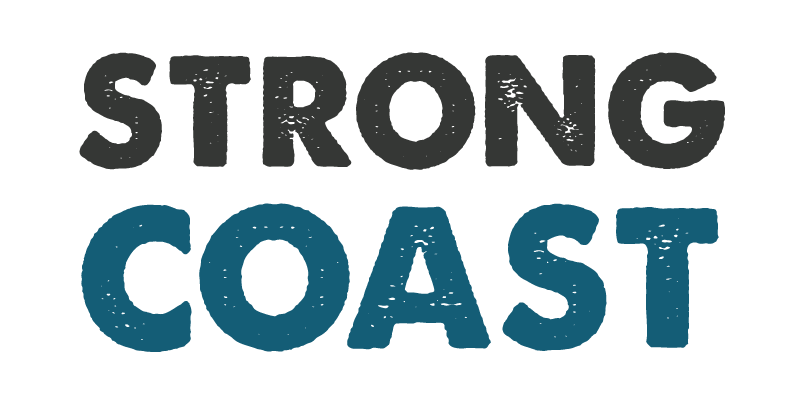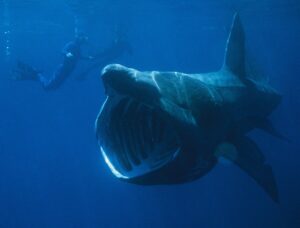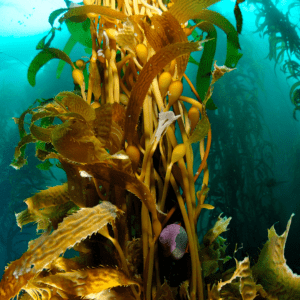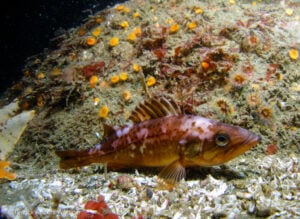Humpback whales are one of many seasonal residents of BC’s coastal waters. The humpback is best known for its size, vocalizations, migratory behaviour, hunting tactics, and breaching displays.
Humpbacks are essential members of the B.C. coastal ecosystem. Despite their rebounding numbers, however, humpbacks face many threats in our waters. These threats include decreased prey, pollution, habitat degradation, marine debris entanglement, ship collisions, and noise pollution.
The best way to mitigate these threats is to ensure the Great Bear Sea Marine Protected Area Network is established. Through local ecosystem-based marine management, this Network will ensure humpbacks remain essential to our coastal ecosystem.
Size and Vocality
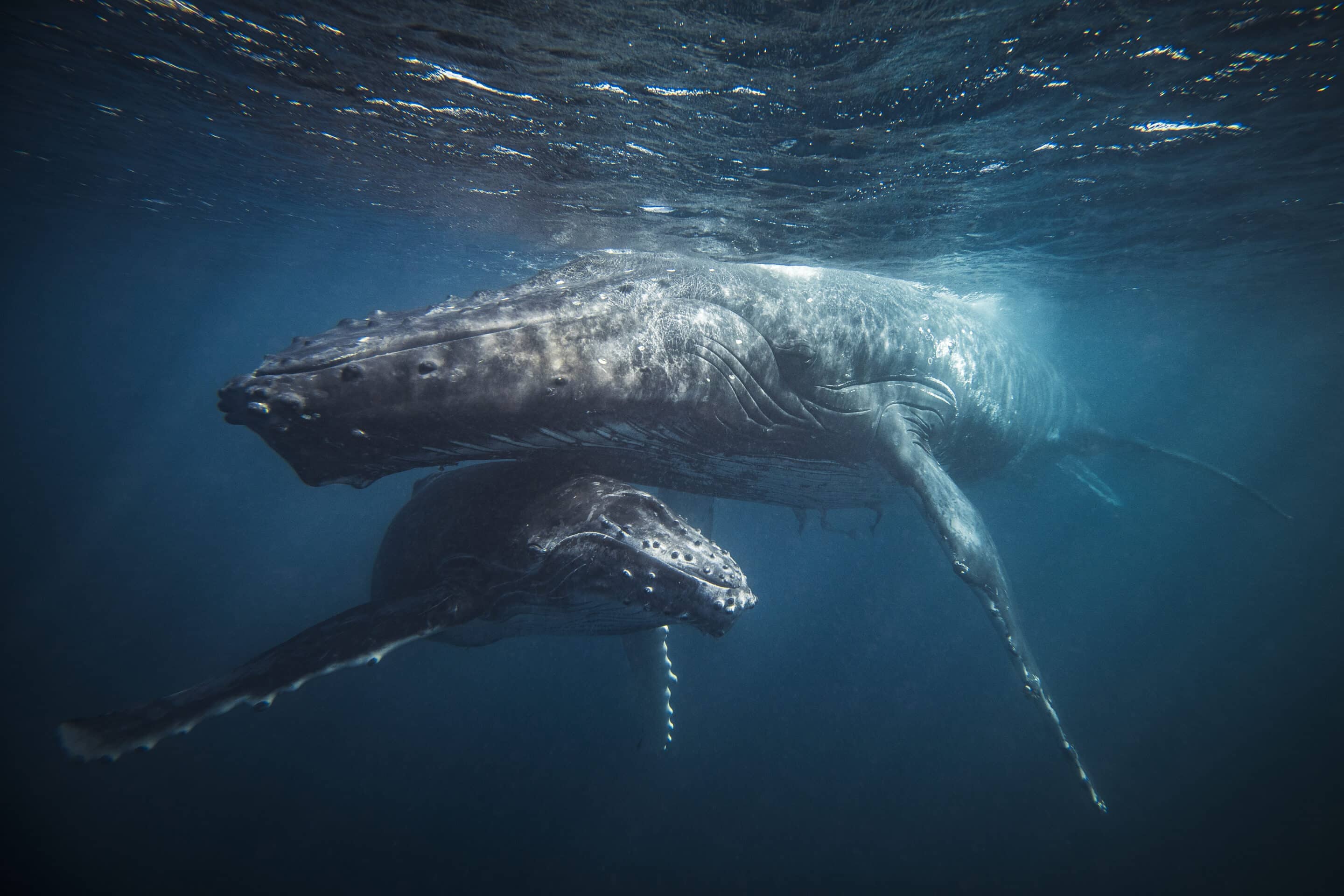
Humpback whales are among the bigger members of the baleen whale family, typically ranging from 40 to 60 feet in length when fully grown and weighing in at 25 to 45 tons. Their most distinctive feature is their patterned tail flukes, which scientists use for identification. Male humpbacks are also well-known for their complex songs, which can last up to twenty minutes or more and may travel hundreds of miles underwater. Most researchers believe that in breeding grounds, these songs are part of mating behaviour. However, there is significant debate about why males sing in feeding grounds. One theory is that males do this to captivate females or assert dominance over other males. Another theory is that they are rehearsing their songs, ensuring they are perfect upon reaching their winter breeding grounds. A third theory is that this behaviour arises due to fluctuating reproductive hormones.
Migratory Behaviour
Humpback whales travel immense distances yearly. They migrate from breeding areas near tropical waters back into polar regions for better feeding opportunities in spring before retreating south again for the wintertime nesting season. It is not uncommon for a humpback to cover 16,000 miles in a single year. For instance, the well-known female humpback Poptart has her breeding grounds in Hawaii but returns to BC’s coast in the summer.
Feeding Habits
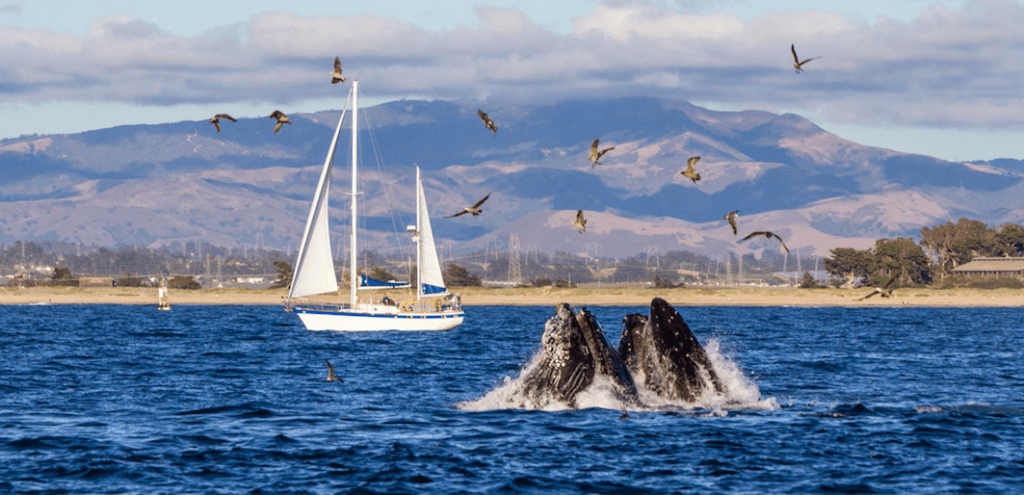
During their time in B.C. waters, humpbacks mainly feed on krill and small fish like sardines, anchovies, capelin, herring and mackerel using a unique feeding technique known as bubble-net-feeding, in which they encircle prey with an array of bubbles before lunging forward with an open mouth. Even though humpbacks are apex predators, they generally do not eat large prey such as seals or sea lions.
Check out this spectacular video of humpbacks engaged in bubble-net-feeding.
Get a bird’s eye view of the bubble-net-feeding technique.
Behavioural Habits and Displays
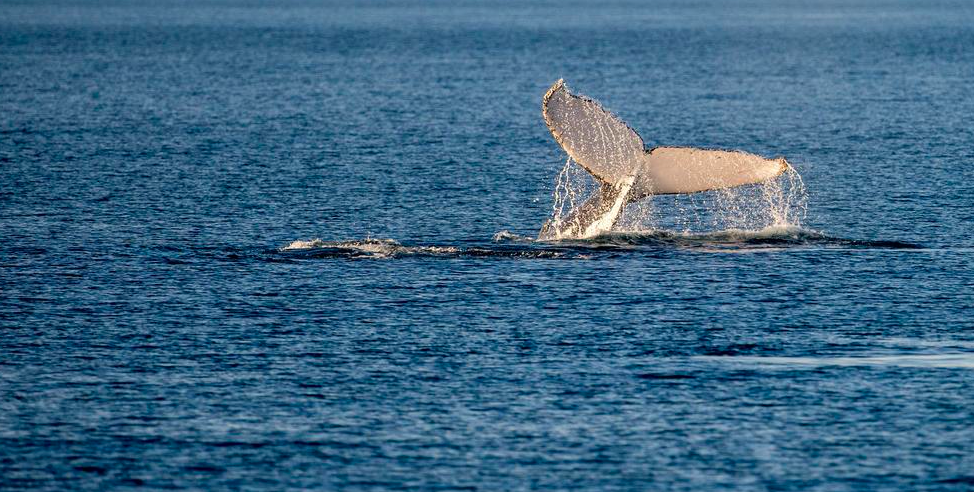
In addition to their impressive migration patterns and feeding technique, humpback whales also breach. Breaching is when humpbacks jump out of the water and come crashing back down on their backs, slapping their fins and flukes on the surface. It is suspected that humpbacks breach as a way of communicating, with the slapping sending messages to other whales. Sound travels quicker and longer underwater, so the enormous breaching splashes allow humpbacks to communicate long distances.
Watch as a humpback breaches incredibly close to a group of kayakers.
Humpback Importance For The B.C. Coastal Ecosystem
Humpback whales play an important role in BC’s coastal ecosystem. They serve as apex predators, regulating population levels amongst krill and other small marine organisms. Therefore, humpbacks help maintain ecosystem balance by stopping these populations from becoming too abundant. As filter feeders, humpbacks consume large amounts of plankton and small fish. When they defecate, their fecal plumes release essential nutrients into the water, supporting the growth of phytoplankton and other marine life. Moreover, humpbacks enhance species interaction through bubble-net-feeding, attracting other marine animals, such as sea birds and cetaceans like sea lions, who opportunistically feed on the disoriented fish left behind by the whales.
Threats
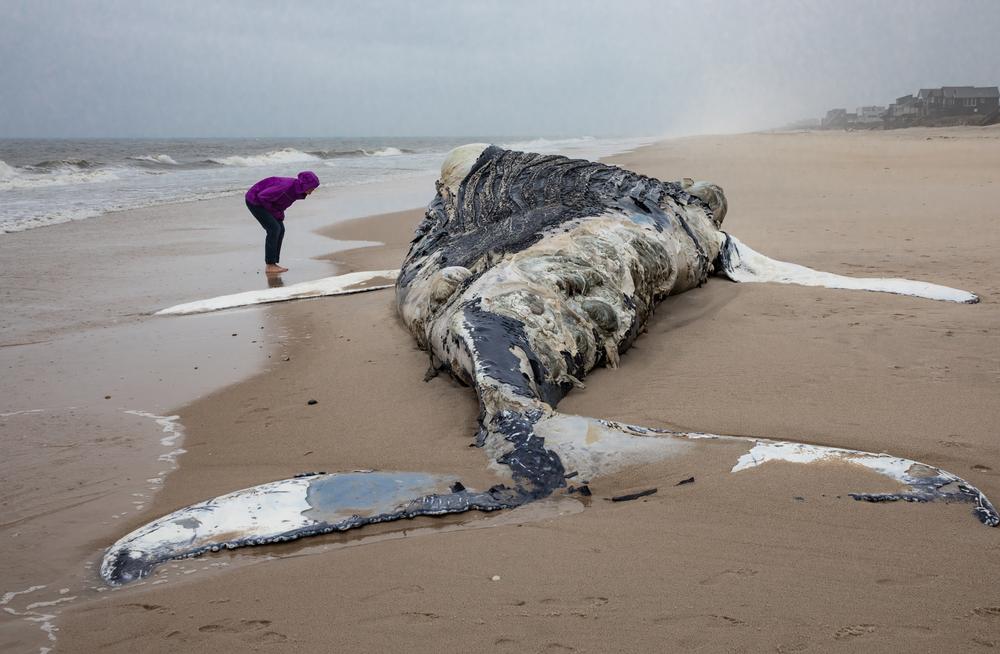
Unfortunately, humpback whales are threatened by numerous human activities. One potential threat is overfishing. If staples to their diet, such as krill and herring, are overfished, this negatively impacts humpback feeding potential. One of the reasons that humpbacks were classified as a “special concern” species is the massive decline of herring in B.C. waters. While humpbacks are now classified as a species of least concern due to population increase, the continuing herring crisis in B.C. threatens humpbacks.
Other significant threats are chemical pollution from oil spills, and industrial and agricultural runoff. These pollutants contaminate the marine environment and humpback food sources. Accumulation of toxic substances in humpbacks can harm their health and reproductive success.
Habitat degradation is a significant threat facing humpbacks. Human activities, including coastal development, pollution, and industrial fishing, have damaged critical humpback habitats, such as feeding and breeding grounds. Habitat damage can disrupt the natural behaviours of humpbacks and affect their reproductive success.
Other threats include marine debris entanglement, ship collisions due to increased vessel traffic, and ocean noise pollution due to increased industrial activity.
The Social, Economic, and Cultural Benefits of The Great Bear Sea Marine Protected Area Network
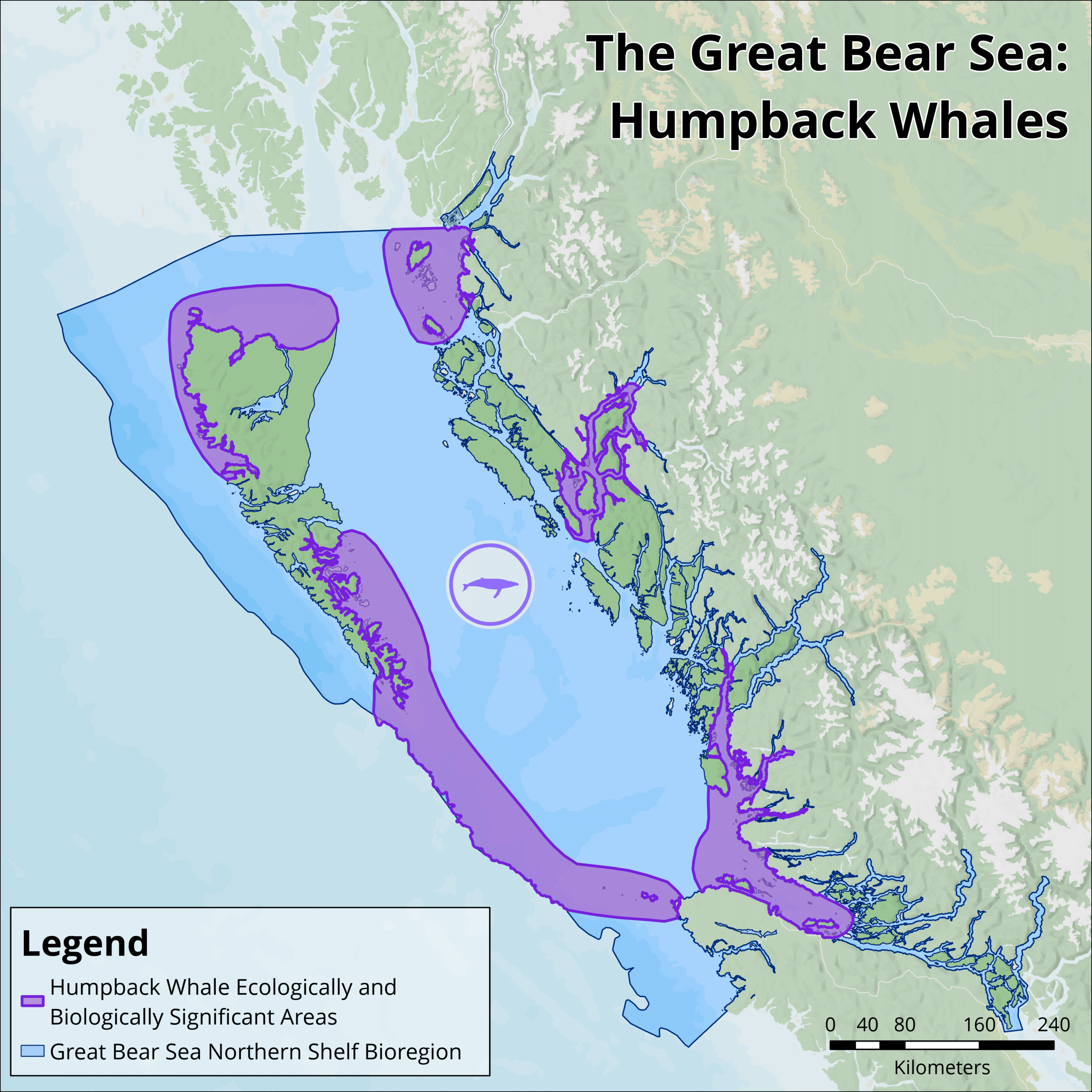
The following are different ways the Great Bear Sea Marine Protected Area Network will ensure the humpback whale population continues to recover:
1. Defending Critical Habitats: One crucial function the Great Bear Sea Marine Protected Area Network will perform is to defend critical humpback habitats, such as breeding and feeding grounds. This allows humpbacks to carry out critical life-sustaining functions undisturbed.
2. Reducing Human Threats: A well-managed marine protected area network will reduce threats caused by such human activities as vessel traffic, noise pollution, and industrial fishing.
3. Supporting Prey Abundance Through An Ecosystem-Based Approach to Marine Management: The Great Bear Sea Marine Protected Area Network will use an ecosystem-based approach to marine management to ensure sustainable fisheries. One of the biggest problems with DFO fisheries management is that it is based on maximum sustainable yield, which privileges industrial fisheries over sustainable quotas.
The place-based ecosystem approach to marine management does not focus on “how much can be taken.” Instead, it focuses on what needs to be kept to ensure the long-term sustainability of fisheries, the health of the Great Bear Coast food system, and the prosperity of coastal Nations and communities.
For humpbacks, ecosystem-based marine management means they will have enough to eat. This will ensure that humpbacks will continue to play a crucial role in maintaining ecosystem balance, nutrient cycling, and species interactions.
4. Local Expertise and Experience: One essential component of the Great Bear Sea Marine Protected Area Network is that management will be in the hands of local Nations and communities instead of bureaucrats in Ottawa. The importance of this management shift cannot be overstated. We want individuals with experience and related knowledge to make decisions and enforce rules and regulations. Marine management must be place-based, which is precisely how the Great Bear Sea MPA Network will be managed. For humpbacks, place-based management will ensure their habitats remain viable and that they continue to have access to their food sources.
Conclusion
Humpback whales are vital to the coastal ecosystem in British Columbia, but they face multiple threats, such as decreased prey, pollution, habitat degradation, entanglement, ship collisions, and noise pollution. To ensure their survival, the establishment of the Great Bear Sea Marine Protected Area Network is crucial. This network will defend critical habitats, reduce human threats, support prey abundance, and be managed by local communities. By taking action to protect humpbacks, we can ensure their continued importance in maintaining ecosystem balance and species interactions.
